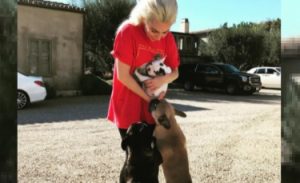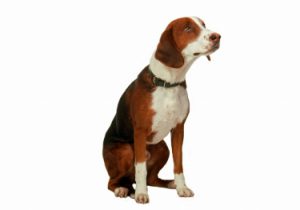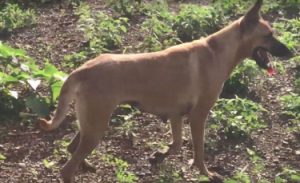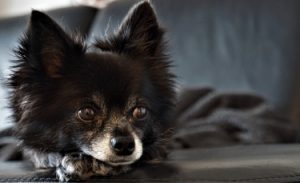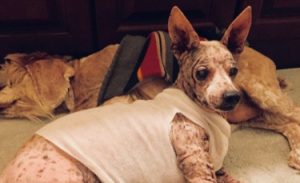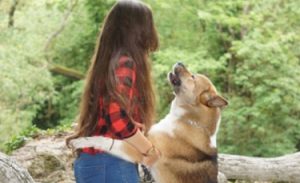Other names: Vostotchno-Sibirskaïa Laïka, East Siberian Laika
The East Siberian Laika is a medium-sized dog, of powerful and compact build, with well-developed musculature and strong bones. It can be written in a rectangle, its length being slightly less than its height at the withers. The gaits of the Eastern Siberian Laika are characterized by movements full of ease, too elongated and alternating with galloping or walking.
<!–
–>

| Half-long | |
| Russia | |
| Average | |
| Triangular |
| Sex | Weight | Cut |
|---|---|---|
| Female | From 18 kg to 28 kg | From 51 cm to 60 cm |
| Male | From 18 kg to 28 kg | From 56 cm to 66 cm |
History of the breed
A dog native to eastern Russia, the East Siberian Laika has always been popular with hunters in the Taiga and the large and hostile swathes of eastern Siberia. His ancestors are notably the Yakut and Tungus . Its first standard was established at the beginning of the last century, but it was not until after World War II that the East Siberian Laika was considered a full breed. Nowadays, it is bred in other regions of Russia and the Nordic countries, but also elsewhere in the world.
The East Siberian Laika breed was definitively recognized by the FCI (Fédération Cynologique Internationale) on June 3, 1980. Its official FCI standard in force was published on October 13, 2010.
Physical features
His hair: straight and hard in texture. The outer coat is associated with an abundant undercoat, woolly and soft in texture. More dense and short at the level of the head and ears, longer on the shoulders and around the neck, forming a ruff. Longer on the withers in males. Abundant on the tail.
Its color: two-tone black and tan, black and white or white and white with magpie spots.
Its head: relatively large, powerful, wedge-shaped. The skull is longer than it is wide, the superciliary arches poorly developed, the occipital protuberance well marked, the stop slightly pronounced, the nose black and moderately large, the muzzle shorter than the skull, the lips joined, the jaws articulated and scissors and pronounced zygomatics.
Its ears: V-shaped, with pointed or slightly rounded ends, erect, lively, set apart and placed at the level of the line of the eyes.
His eyes: dark brown, medium in size, oval, arranged at an angle, displaying a friendly and frank gaze.
Its body: the neck is muscular and lean, the topline is straight and robust, the withers well developed and pronounced, the back straight and powerful, the loins short and moderately broad, the croup broad and relatively long, the chest ample and well let down, the bottom line raised.
Its tail: falling on the back, rolled up or sickle. Trimmed with abundant hair.
Behavior and character
| Affectionate | |
|---|---|
| Calm | |
| Protective | |
| Independent | |
| Hunter | |
| Barks / howls |
Behavior with others
| Cohabitation with children | |
|---|---|
| Sociable with other animals | |
| Love strangers |
the Laika from Eastern Siberia is a dog with a balanced temperament and characterized by great independence , especially when hunting. He has a very powerful flair and particularly enjoys hunting large game. With his master, to whom he is very attached , he is gentle and extremely reliable. The East Siberian Laika is friendly, but suspicious of strangers.
The Laika of Eastern Siberia
is it right for you? Take the test!
Education
| Clever | |
|---|---|
| Obedient |
The Laika of Eastern Siberia calls for a firm education , but without brutality. He learns by playing and working, especially through positive reinforcement methods that rely on rewards and encouragement. The East Siberian Laika must also benefit from quality socialization .
Living conditions
| Suitable for apartment living | |
|---|---|
| Good for new masters | |
| Love it hot | |
| Love the cold |
The Laika of Eastern Siberia is intended for experienced owners , knowing how to show firmness, manage an independent dog and offer him enough activity on a daily basis. He does not like apartment life and will prefer to live in a house with a large garden .
Health
| Solid | |
|---|---|
| Ease of gaining weight |
the Eastern Siberian Laika is a tough and healthy dog . There is no predisposition to a particular disease in this breed.
Hypoallergenic breed
No
Litter size
Between 3 and 6 puppies
| Major concerns |
|
||
| Minor concerns |
|
| Suggested tests |
|
To protect you from these risks and insure your companion in the event of health problems, Woopets recommends insurance for Laika dogs from Eastern Siberia .
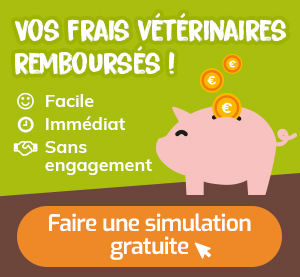
function showAssuranceForm () {var siteReferer = var id_race_association = ”; //console.log(id_race_association);success: function (html) {}});}document.addEventListener (‘DOMContentLoaded’, () => {$ (‘# assuranceModalBanner’). on (‘show.bs.modal’, function (event) {showAssuranceForm ();});});
Life expectancy
Minimum: 12 years old
Maximum: 14 years
The life expectancy of an Eastern Siberian Laika is, on average, between 12 years and 14 years.
Calculate the human age of your East Siberian Laika!
To choose… 1 year 2 years 3 years Four years 5 years 6 years 7 years 8 years 9 years 10 years 11 years old 12 years 13 years 14 years old 15 years old 16 years old 17 years 18 years old 19 years old 20 years 21 years old
Maintenance and hygiene
| Ease of maintenance | |
|---|---|
| Cost of maintenance | |
| Hair loss |
| Drool level | |
|---|---|
| Ease of grooming |
the Eastern Siberian laika is subject to one or two moults per year, occurring in spring and / or autumn. Its maintenance does not pose any particular problem if it is regularly provided.
It is recommended to brush the dog once or twice a week . During the moult, which generally lasts 3 weeks, brushing should be done daily in order to remove dead hair. One or 2 baths per year are sufficient.
Its eyes, ears and pads should be examined carefully for the presence of debris. His teeth need to be brushed frequently to remove tartar build-up and the proliferation of bacteria. Finally, if they do not wear out naturally, its claws need to be cut. If you are new to this, it is recommended that you seek advice from a veterinarian or groomer.
Price and budget
Purchase price
Mini
NC Maxi
NC
The purchase price of an East Siberian Laika is between NC and NC.
Annual maintenance cost
Mini
€ 450 Maxi
650 €
The annual maintenance cost of an East Siberian Laika is between € 450 and € 650.
No name is currently proposed. Use our tool to find the name of your East Siberian Laika!
Food
The diet of the East Siberian Laika should be adapted to their level of physical activity, size and age.
Want the best for your dog?
Create tailor-made food for your East Siberian Laika
I discover !
PROMO -30% | Delivered to you!

Physical activity
| Athletic | |
|---|---|
| Energy level | |
| Potential to play |
the Laika from Eastern Siberia needs to stay active and be stimulated on a daily basis . It calls for one to two long walks a day and a variety of games.
Competitions
| Classifications & Standards |
|
Others
| Master character <span class="btnTooltip qTip2" title="- Calm: the master must be gentle and know how to show patience. – Active: the owner must be energetic and dynamic to live in harmony with his dog. – Hyperactive: the owner must be stimulating and very restless to suit the temperament of his dog.”> |
Active |
|---|
We talk on the forum
Siberian husky puppy
Message from Michael Ronat
In my heart you will stay forever …. my Laika
Message from Joo
Laika …….. LEFT WITHOUT CARE FOR 5 YEARS!
Message from Joo
Laika of Lakutia
Guest message
Do you have a question about the East Siberian Laika?
Do not hesitate to ask Woopets visitors for advice on the forum!
FCI Information
FCI No.
305
FCI Group
Group 5: Spitz-type and primitive-type dogs
Recognized by FCI
Since 1980
</div




